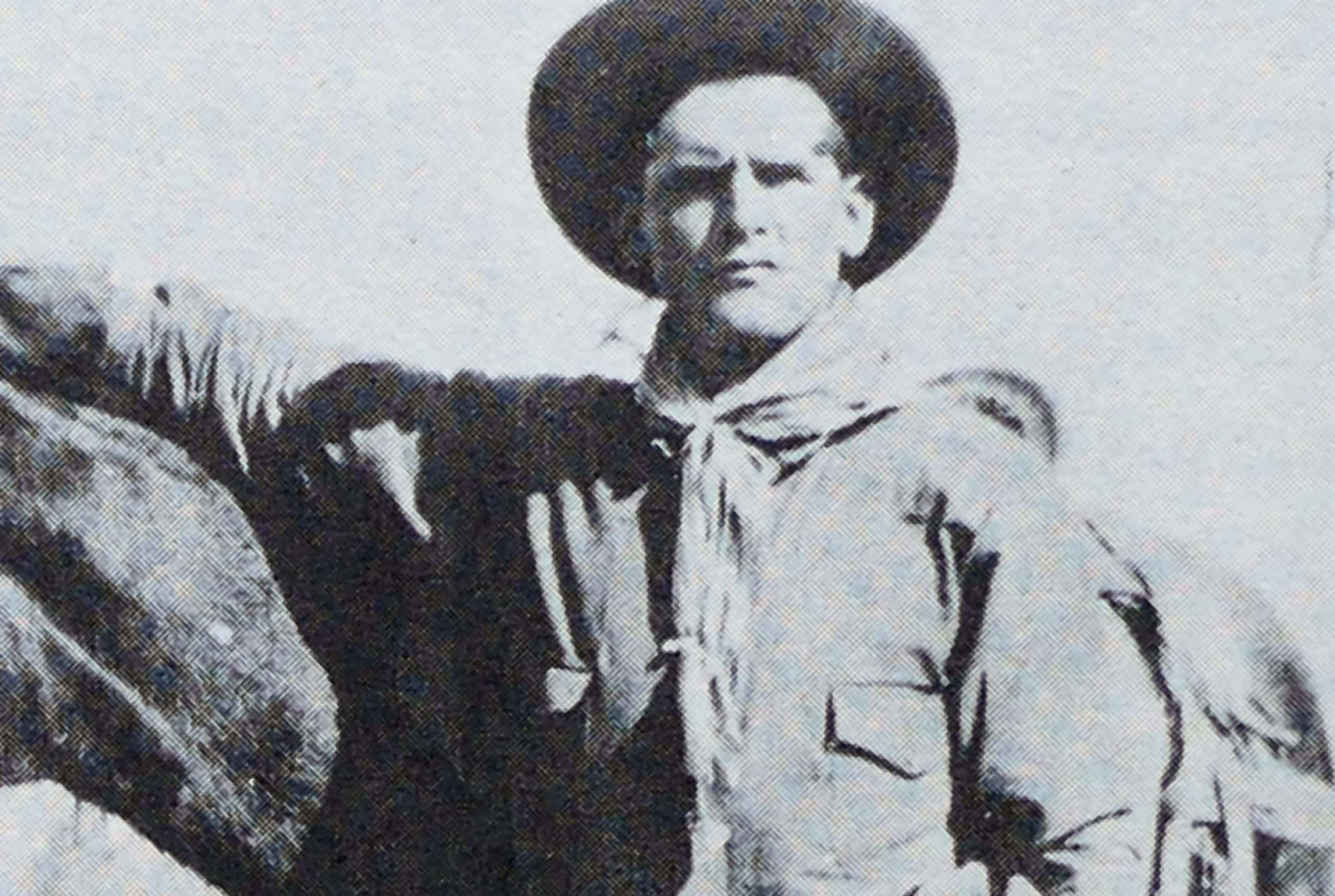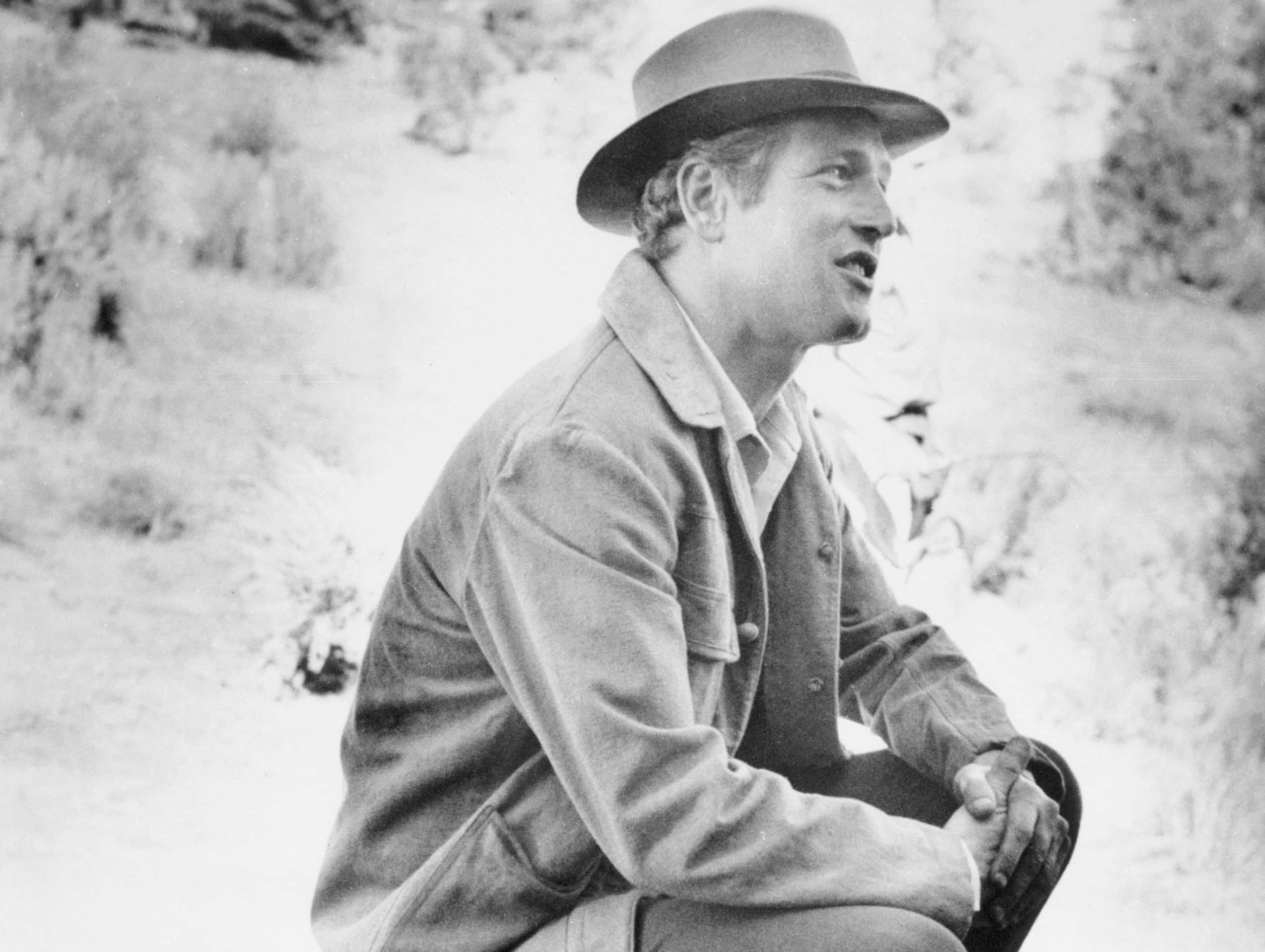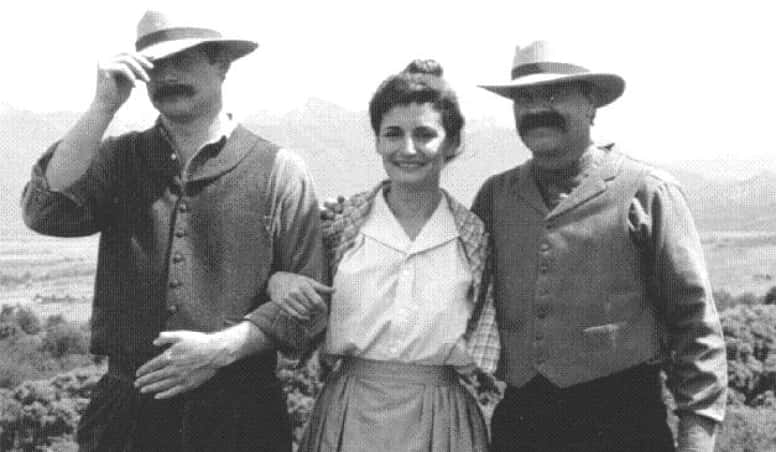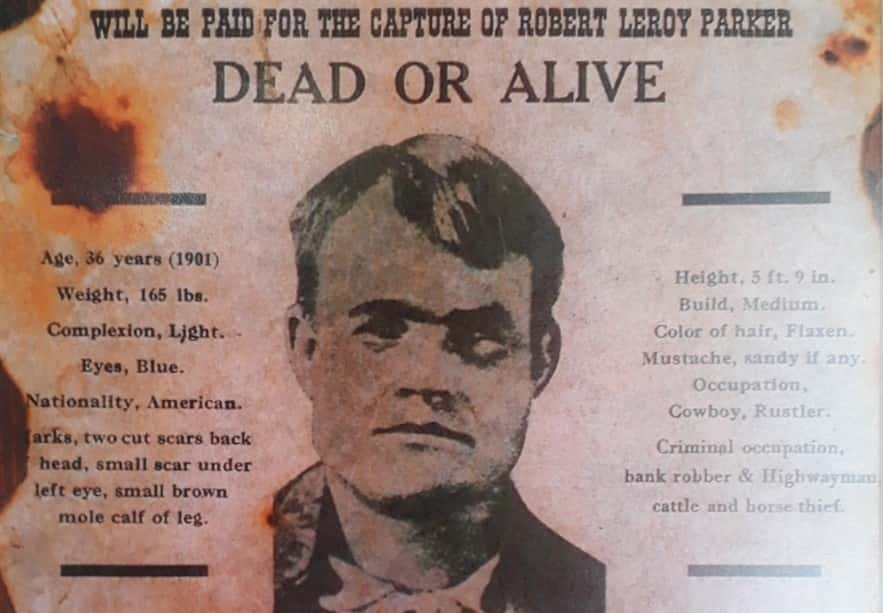Butch Cassidy, The Gentleman Outlaw
"I get sick of being right all the time." Paul Newman, Butch Cassidy and the Sundance Kid
In the annals of American outlaws, the most iconic duo was arguably Butch Cassidy and the Sundance Kid. Their partnership through thick and thin led to a story which has entranced Hollywood several times. But for now, let’s look at Cassidy on his own. Who was this figure? How did he meet the Sundance Kid and how did he begin his life of crookery? Find out more about Cassidy below!

1. Prodigal Son
Robert Leroy Parker was born on the 13th of April 1866 in the town of Beaver, Utah. His parents, Maximilian Parker and Ann Campbell Gillies, were both Mormons. It’s safe to say that Cassidy did not adhere to his parents’ faith!
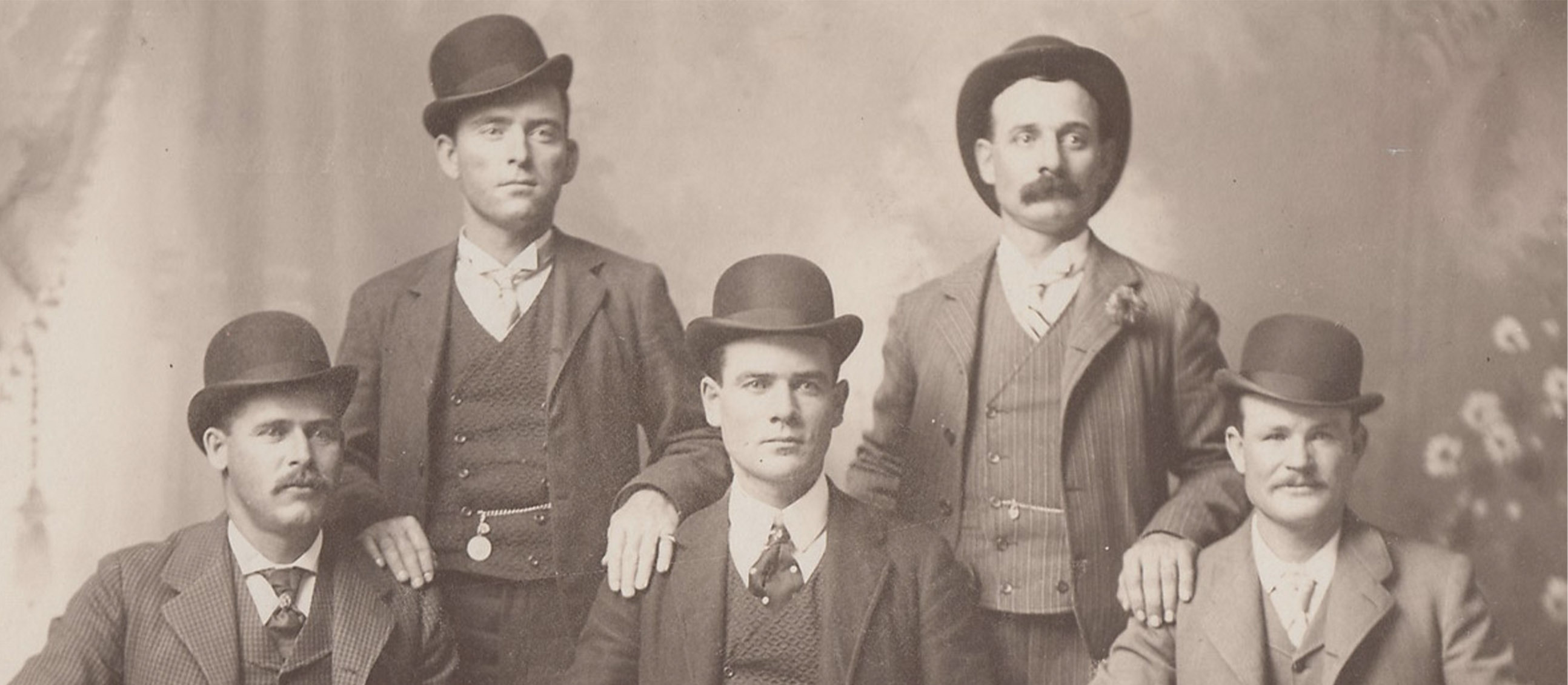
2. Lots of Mouths to Feed
Cassidy was the oldest child in a family which included twelve siblings! We’re inclined to make a joke about the thirteenth child going down the wrong path, but since he was technically first, that doesn't exactly hold up? Oh well, we tried.
3. Family Past
In the 1850s, Brigham Young encouraged people of the Mormon faith to come and settle the land which would become the state of Utah. Cassidy’s parents both came over as teenagers with their families from England. Maximilian and Ann were married in 1865, just a year before Cassidy was born.
4. Might You Say Cassidy Had a Death Wish?
Not surprisingly, Cassidy has been the subject of several films and TV shows. We’ll get to some of the films later, but for now, we’ll note one actor who played Cassidy on the small screen: a young, then-unknown Charles Bronson! Before his career exploded thanks to classics like The Magnificent Seven, The Great Escape, and Once Upon a Time in the West, Bronson acted as Cassidy in a 1958 episode of the series Tales of Wells Fargo.
5. An Outlaw By Any Other Name
“Butch Cassidy” was just the most well-known moniker that Cassidy used. During his life, Cassidy was also known by the nicknames Jim Lowe, George Cassidy, and Santiago Maxwell.
6. Life Shouldn’t Work Like That!
Cassidy’s illicit lifestyle first began when he was around 14 years old. He went into town to buy a new pair of overalls (or jeans, depending on the source) for himself. He found the store to be closed, so he helped himself to a pair that he liked and left a note promising to return with payment for the clothes. Allegedly, Cassidy grew up with the idea that a man kept his word, and that his word would be enough in any agreement. The store owner put more faith in capitalism, however; he pressed charges against the young Cassidy for stealing his merchandise. According to sources, this left Cassidy humiliated and disillusioned with his society.
7. You Get a Warning, Buddy
Surprisingly, despite the store owner’s charges against Cassidy, he was ultimately acquitted by his jury (they presumably trusted an IOU as much as Cassidy did). All the same, if we look at Cassidy’s subsequent life, we can assume that his faith in his fellow men wasn’t restored.
8. Dream Big
In 1879, Cassidy’s family moved to Circleville, Utah. They bought farmland to work, while also raising cattle for extra money. Sadly, they were in dire poverty (imagine trying to feed and clothe thirteen kids!), leaving the young Cassidy to long for riches and wealth when he grew up.
9. We Can Agree on Our Hats At Least!
In the 19th century, in an effort to replace the unwieldy top hat, London hatmakers Thomas and William Bowler designed the sturdy, close-fitting hat which they named after themselves. The bowler hat took British society by storm, with the fashion trend going overseas as well. Cassidy was one of many men who adopted the bowler hat as their fashion choice. The hat went into such style that outlaws and lawmen alike ended up wearing them!
10. The Beginning of an Illicit Career
On the 24th of June 1889, the San Miguel Valley Bank in the town of Telluride was robbed by a group of four men. Two of them were brothers of the McCarty family, while the other two were Cassidy and his friend Matt Warner. The heist was a success for the men, netting them $21,000 (which would be worth $586,000 in 2018). It was the first bank heist which Cassidy ever participated in, and it certainly wasn’t the last.
11. The Margins are Too Low
You might be wondering who Matt Warner was. Cassidy became acquainted with him in 1887 when the two men met in Telluride after he’d been living the cowboy lifestyle. Warner owned a racehorse, which participated in several events. Warner and Cassidy struck up a bargain where they co-owned the horse and split any winnings which the horse earned. This partnership continued into crookery later.
12. For My Mentor
When it comes to Cassidy’s famous alias, half of it was inspired by a man whom Cassidy got to know when he was a teenager. Cassidy was working on a ranch in the early 1880s when he met Mike Cassidy, a jack-of-all-trades who taught the younger man all about horseback riding and shooting. Even after the two men had to part ways due to Mike’s brushes with the law, his protégé took up the surname “Cassidy” in his honor.
13. Good Thing I Didn’t Work as a Rat Catcher!
As we’ve already pointed out, Cassidy was known by many first names, so you might be wondering where the name “Butch” came from. In between his ventures into crookery, Cassidy relocated to Wyoming, in the settlement of Rock Springs. It was there that he got work in a butcher’s shop, and he allegedly became known in the town as Butcher Cassidy. This was eventually shortened to Butch Cassidy, and thus, his iconic name was complete.
14. My Real BFF
Thanks to a certain Hollywood film that was made about Cassidy (more on that later), it’s long been the fashion to pair Cassidy and the Sundance Kid together as the best of friends. However, Cassidy actually had another man whom he considered a better friend. William Ellsworth "Elzy" Lay had known Cassidy longer, meeting him in 1889. They both became members of the Wild Bunch gang until Lay was imprisoned in 1899.
15. Not Exactly a Jailbird
For all his actions as a crook, Cassidy only received one jail sentence in his life, and it wasn’t for a bank or train heist. In 1894, Cassidy was apprehended for horse thieving and sentenced to two years in prison. However, his good behavior caused him to be released after eighteen months.
16. A Soft Reboot
In the early 1890s, a ruthless outlaw gang known as the Wild Bunch spent their years of existence committing robberies and murders before most of them met brutal ends. In 1899, a new Wild Bunch was founded, with Cassidy as its most well-known member. Unlike the first Wild Bunch, however, Cassidy’s gang tried to avoid committing physical harm if they could rob bloodlessly (their track record wasn’t perfect, though).
17. No Battling Sexes Here
Unlike the original Wild Bunch, Cassidy’s Wild Bunch included several female outlaws amongst their members and associates. The sisters Ann and Josie Bassett were ranchers who supplied the outlaws with food and horses. Laura Bullion would ride with the Wild Bunch and spend time in lockup for her unlawful activities. However, she would go on to put the outlaw life behind her, outliving Cassidy by more than forty years!
18. Fleeting Affair
Speaking of Ann Bassett, she and Cassidy would go on to have a romantic relationship which lasted for seven years. This relationship was marred by long absences on Cassidy’s part, however, including his eighteen-month prison sentence. When Cassidy chose to leave the US behind (more on that later), he never saw Bassett again, as far as anyone knows anyway.
19. The Wild Mentor
Around the start of the 21st century, Family Channel released the Canadian TV series Mentors, which followed kids in the modern-day bringing famous people from the past to the present in order to solve their problems. The show did well enough to run for four seasons, the latter of which featured an episode where Butch Cassidy is brought to the present day. He is played by John Pyper-Ferguson (you might know him as Jack Soloff in Suits).
20. All in One Day
On the 13th of August 1896, members of the Wild Bunch, including Cassidy, successfully committed a bank heist. The men pilfered $7,000 from a bank in Montpelier, Idaho. In case you can’t automatically convert that sum into 2019 money, we’ll tell you: Cassidy and his associates robbed more than $200,000 that day.
21. Reverse Robin Hood
On the 22nd of April 1897, a group of men were busy escorting the payroll to a mining town known as Castle Gate in Utah. The payroll never arrived, however, thanks to the efforts of Cassidy and the rest of the Wild Bunch. More than $7,000 worth in gold was taken that day as well.
22. Does He Sing?
Cat Ballou was a hit Western in 1965, and it was also a comedic musical to boot. Cassidy was a supporting character in the film, played by the Oscar-nominated actor Arthur Hunnicutt.
23. Dynamic Duo
It was after the robbery of the Montpelier bank in 1896 that Cassidy first met Harry Alonzo Longabaugh, best known as the Sundance Kid. The two would be associates for the rest of their lives.
24. The Mystery of Cassidy
Cassidy also made an appearance (of sorts) in the long-running Canadian TV series Murdoch Mysteries (also known as The Artful Detective). In the episode “Glory Days” of the eighth season, the focus is on Bat Masterson (played by Steven Ogg), the renowned US lawman who is on the hunt for Cassidy and the Sundance Kid. The mystery of whether Cassidy and the Kid are in Toronto fuels the episode as the protagonist joins Masterson’s hunt.
 Murdoch Mysteries , Shaftesbury Films
Murdoch Mysteries , Shaftesbury Films
25. Not Exactly the Bat Cave, but We’ll Take It
As anyone will tell you, all respectable crooks or gangs need a good hideout to avoid pursuit. In the case of Cassidy and the Wild Bunch, they made use of a remote region in southeastern Utah. Known as Robbers Roost, the Wild Bunch gang constructed cabins within the canyons of the area and managed to keep their location secret from the authorities. Eventually, the location did get out, and Robbers Roost is now a popular attraction for hikers and horseback riders.
26. Maybe Add a Talking Dog Sidekick?
Several books have been written about Cassidy, and it’s safe to say that he doesn’t avoid getting his life fictionalized. In one such book, Coyote Waits, Cassidy hides a lost treasure which has to presumably be found by the protagonists. We haven’t read the book, but we’re suspecting that he shows up as a ghost at some point in the story. Or maybe he’s rigged some traps to protect his treasure?
27. You Weren’t Joking?!
In case you thought the idea of missing treasure was a one-off, allow us to tell you about a 2006 film titled Outlaw Trail: The Treasure of Butch Cassidy. In this film, Cassidy’s grand-nephew embarks on a search for a hidden stash of money. In an example of him having nothing better to do, veteran actor James Karen played the role of Cassidy in the film, for which we hope he was well-paid.
28. Escalation
In 1899, Cassidy and the rest of his Wild Bunch reached widespread notoriety when they robbed a passenger train belonging to Union Pacific in Wyoming. This prompted a variety of lawmen to pursue the gang without success. As for Cassidy’s gang, they got caught in a number of shootouts with the law, adding murder to the list of charges against them. One of the first men they slew was Sheriff Joe Hazen. As you can imagine, this only heightened the law’s pursuit of them.
29. Change of Scenery
It’s uncertain whether Cassidy and the Sundance Kid left the US together or whether they left separately and only reunited later on. Whatever the case, Cassidy and the Sundance Kid eventually left their home country to avoid the attention of the law, traveling to Argentina in 1901. Also with them was the Sundance Kid’s partner, Etta Place.
30. A Leopard Can’t Change its Spots
Once in Argentina, Cassidy, the Sundance Kid, and Etta Place initially purchased a ranch to settle down in and live a quiet life. However, the two men soon went back to robberies. One of the robberies attributed to them occurred on the 14th of February 1905 at the Rio Gallegos bank. The loot they made off with would have been worth around $100,000 in modern-day currency.
31. I’m a Nice Guy!
For all his unlawful activity, Cassidy became famous for his polite demeanor and his aversion to physically hurting people. Certainly, he was happy to use guns to intimidate or threaten, but he actually boasted that he had never once killed anyone in his life. Seems a rather odd thing for a crook to be proud of, but it seems to have worked for him, at least for a while.
32. Life on the Run
In May 1905, authorities were closing in on Cassidy and his companions, due to the Pinkerton agency cooperating with the Argentine government. Cassidy and the trio sold their ranch and fled into Chile. For the next year or so, they would make trips into Argentina to rob more banks, only to flee into Chile to avoid the authorities. While this setup seemed successful for a time, it was in 1906 that Etta Place had had enough of this kind of living and returned to the US.
33. No Spoilers, We Promise!
One film based on Cassidy’s life that you might not think of right away is the controversial 1969 Western The Wild Bunch. Directed by Sam Peckinpah (one of the men who would inspire the likes of Oliver Stone and Quentin Tarantino), The Wild Bunch is a very loose adaptation of Cassidy’s exploits as an outlaw—while they were still called the Wild Bunch, and the actual gang members in the film were all fictional.
34. Only Ten Films Better Than Us!
The same year that The Wild Bunch was released, we also got the most famous adaptation of Cassidy’s story. Butch Cassidy and the Sundance Kid starred Paul Newman and Robert Redford in a partnership that has gone down in Western history. Such is the film’s legacy that when the Writers Guild of America presented a list of the 101 greatest screenplays ever written, Butch Cassidy and the Sundance Kid ranked #11. Not bad at all!
 Butch Cassidy and the Sundance Kid, 20th Century Fox
Butch Cassidy and the Sundance Kid, 20th Century Fox
35. Makes for an Interesting Pair!
Interestingly, Cassidy’s home town was also the birthplace of another famous American, albeit famous for much more respectable reasons. Philo T. Farnsworth was born there in 1906. He would go on to be an inventor whose work contributed to the creation of the television set. His invention would then go on to immortalize the more infamous celebrity of Beaver, Utah.
36. The Prequel Nobody Asked For
In 1979, a prequel was made to Cassidy’s most well-known film adaptation. Of course, since we had to tell you about its existence, it’s clear that it wasn’t nearly as successful as Butch Cassidy and the Sundance Kid had been. Butch and Sundance: The Early Days starred Tom Berenger as Cassidy and William Katt as the Sundance Kid.
 Butch and Sundance: The Early Days, 20th Century Fox
Butch and Sundance: The Early Days, 20th Century Fox
37. Outlaws in Disguise
As he’d done in the US, Cassidy resorted to robbing payrolls as they were being delivered to remote locations while in South America. He and the Sundance Kid were in Bolivia at this point, and their day job was, ironically, guarding a payroll for a mining company! It was a move that’s either very clever or very obvious, depending on how you look at it.
38. We’re Seeing a Pattern Here
For one of the most bizarre aspects of Cassidy’s legacy, we have to go to that famous world of Pokémon. Butch and Cassidy was the lesser-known duo from Team Rocket, often squaring off against their rivals, Jessie and James. And yes, the latter duo was named after American outlaw Jesse James.
39. Who’s the Boss?
Despite the romanticized notion that Cassidy was in charge of the Wild Bunch with the Sundance Kid as his right-hand man, many insist that this wasn’t the case in real life. Joe LeFors was a lawman who pursued the Wild Bunch during their active years, and he wrote about his experience years later. Surprisingly, Cassidy’s name only comes up once and the Sundance Kid was never mentioned by LeFors at all! This doesn’t prove anything, of course, but it has been ammo for historians who suggest that the Wild Bunch was actually led by Harvey Logan, another one of its members.
 Butch Cassidy and the Sundance Kid, 20th Century Fox
Butch Cassidy and the Sundance Kid, 20th Century Fox
40. We’ve Overstayed Our Welcome
One of the reasons that Cassidy left the US was the dissolution of the Wild Bunch following one of their biggest robberies. On the 3rd of July 1901, holding up a train in Montana netted the gang the equivalent of nearly $2 million in 2019 currency! This was, however, their last hurrah, as the gang split up, only for the individual members to be either slain or apprehended by authorities. Cassidy saw the writing on the wall and hightailed it out of the US.
41. A Violent End
The accepted story of Cassidy’s demise is that he and the Sundance Kid were in San Vicente, Bolivia, on the 3rd of November 1908. They had previously robbed a payroll near the town, taking one of the company mules. Stupidly, Cassidy and the Sundance Kid had brought the mule with them into town, and someone recognized it. A cavalry unit stationed nearby was alerted by the locals and a shootout commenced in earnest.
Cassidy and the Sundance Kid barricaded themselves in a local house, which was surrounded by the authorities and hit with repeated volleys of gunfire. The two outlaws’ bodies were eventually recovered, riddled with bullets. Two of said wounds, however, were placed so that it seemed like Cassidy may have offed the Sundance Kid in an act of mercy before turning the gun on himself as well.
42. Rumors of My Demise…
Despite his alleged demise in Bolivia, many have suspected that Cassidy didn’t actually die in a shootout. In the late 20th century, a team of researchers located the graves where Cassidy and the Sundance Kid allegedly lay and exhumed the remains. We’re not sure how this could be confirmed, but the researchers determined that these two corpses weren’t Cassidy or the Sundance Kid. Meanwhile, there were several unconfirmed sightings of Cassidy after his supposed death. According to these sightings, Cassidy made his way back to the United States and lived peacefully in anonymity. We’ll never truly know the truth for sure.
Sources: 1, 2, 3, 4, 5, 6, 7, 8, 9, 10, 11, 12, 13, 14, 15, 16, 17


